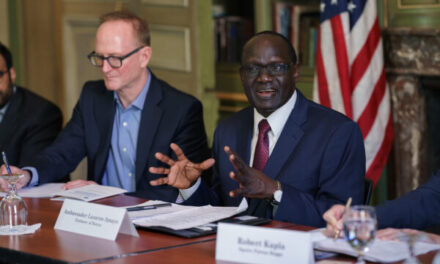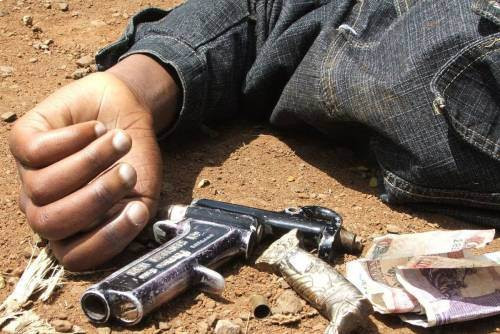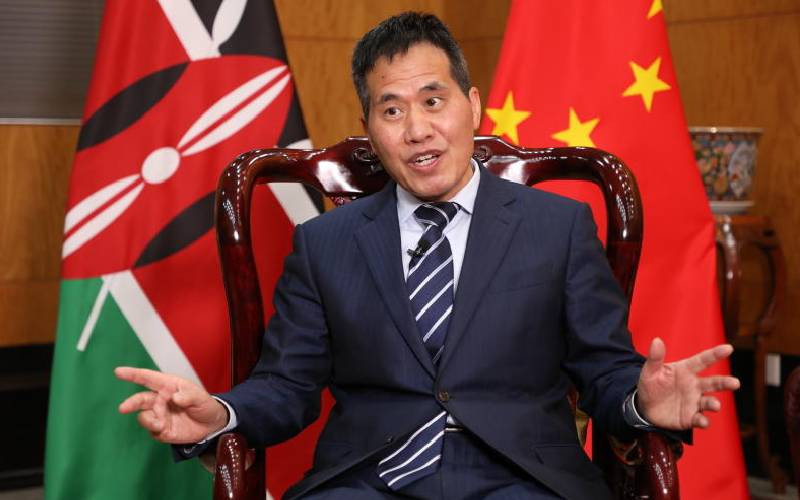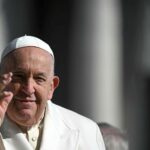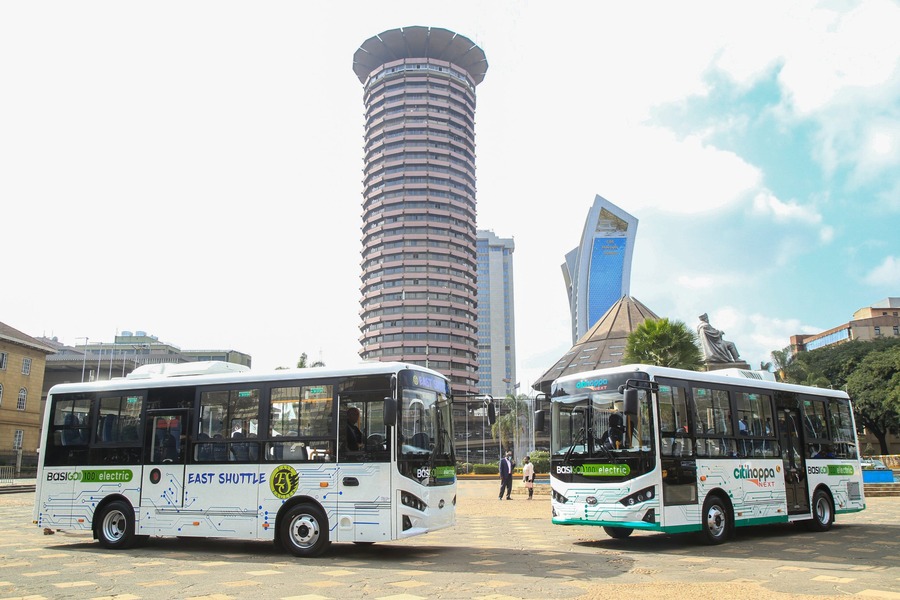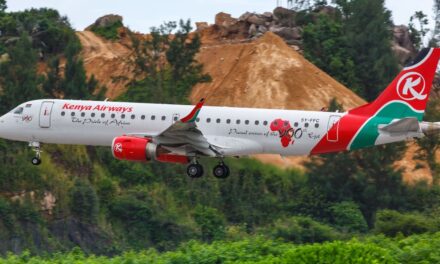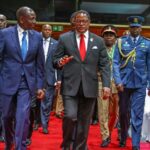
Behind the Scenes of a Well-Choreographed but Tone-Deaf Royal Visit to Kenya
Posted by Mwangi Maina | Nov 4, 2023 | RACIAL UNDERTONES
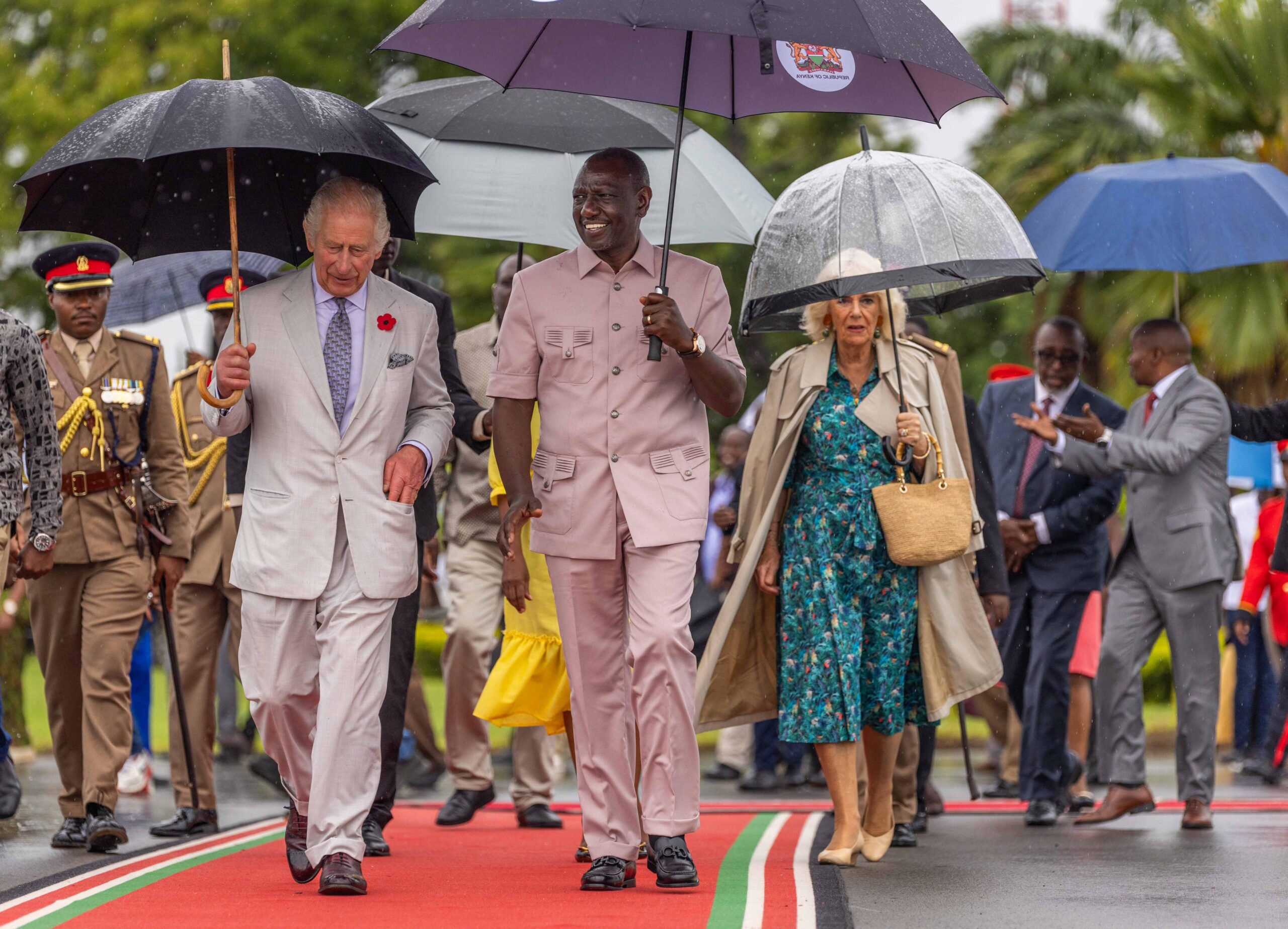
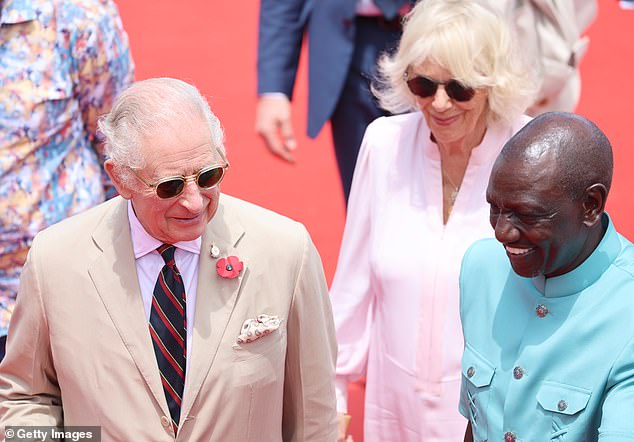
King Charles and Queen Camilla’s royal tour of Kenya came to a close on Friday, an event marked by a careful blend of high-class diplomatic messaging, symbolism, and amicable interactions accented with name-checks and optics.
Yet, the state visit, carefully and highly scripted as any tour may have missed a crucial opportunity to address immediate domestic concerns that many Kenyans had anticipated.
Twelve years ago, a harrowing incident unfolded when a young hairdresser fell victim to the brutal acts of British soldiers in Nanyuki, and her body was covertly disposed of in a septic tank.
Still, a conservancy previously owned by a British national was reduced to ashes by UK soldiers. These events have to date contributed to a significant environmental crisis, particularly in areas where the British Army Training Unit Kenya conducts exercises.
This destruction, including the lives of wild animals, has further exacerbated an already fragile ecosystem.
Notably, King Charles, who passionately advocates for environmental conservation and serves as the Patron of the Royal Society of Wildlife Trusts, failed to publicly acknowledge these contemporary atrocities during the state visit.
Speculation arises that this omission including not visiting the White Highlands, now Laikipia might be a calculated effort to avoid drawing attention to the defence agreement between Kenya and the UK, and the modern-day atrocities being committed by the visiting soldiers.
While Kenyans had hoped for a clear and unequivocal apology, King Charles expressed only his “deepest regret” during a state dinner for the “abhorrent and unjustifiable acts of violence” that occurred during Kenya’s fight for independenceduring a State Banquet on Tuesday evening at State House, Nairobi.
President William Ruto, while commending the King’s initial step, emphasized that there is still much more to be done.
Notably, Britain’s High Commissioner to Kenya, Neil Wigan, suggested a week before this visit that offering an apology could place the UK in “difficult legal territory.”
“Acknowledgement alone is not enough,” David Ngasura, a historian from the Talai clan in western Kenya, whose members were forced from their land in the 1930s and sent to detention camps told CNN.
Today, much of that land belongs to multinational tea companies.
“I am yet to hear him about compensation and reparations by the British government to the victims of historical injustices meted by the British colonial government.” Kipchoge araap Chomu, the great-grandson of King Koitalel Arap Samoei, who led a decade-long rebellion by the Nandi people before he was killed by a British colonel in 1905, said Charles’ speech fell short of his hopes for an apology, reparations and the return of his ancestor’s remains.
“(Charles) just beat around the bush, went round, round saying ‘we recognise the pain, we can’t change the past’,” Chomu said in an interview on CNN.
Chomu suggested Britain follow the example of Germany, which has apologised for its slaughter of tribespeople in Tanzania and Namibia more than a century ago and agreed to fund projects worth over a billion euros.
Dr. Michael Mugo, the national vice chair of Kiama kia Ma, the cultural pillar of the kikuyu Council of Elders commenting on the nature of the royal visit, told Kenyan Foreign Policy, “It appears to be a government-to-government tour, primarily focused on strengthening diplomatic relations and addressing issues that the UK supports,”.
He said, “other than discussing matters related to farming and wildlife conservation, King Charles failed to acknowledge the demand to address the struggle for independence and the atrocities committed by the British in Kenya during colonial times and the modern ones,”.
“At the very last, King Charles could have visited Laikipia. Not just for a formal visit, but to provide a sense that the grievances of the people in that area would be addressed,” Mugo told KFP.
Laikipia, once known as the ‘white highlands’ during colonial times, served as the center of European settlement, making it a vital location for addressing historical injustices.
As a constitutional monarch, there’s little the King can do, and these demands are matters for his government. However, he can listen and make sure the grievances are heard at the highest levels. That’s the power of monarchy. It can elevate issues and arguments even if it can’t be seen to influence them.
These issues- the tour also faced criticism due to the mistreatment and racial discrimination experienced by local journalists covering the event.
Journalists complained of being segregated from their British counterparts during transportation and not receiving proper meals, despite Kenyan taxpayers partly funding the visit.
Organisers allegedly separated journalists from Kenya and the UK, drawing criticism and claims of racial discrimination.
The controversy began when three separate buses were designated for journalists: two for the royal editors, correspondents, and photographers from the UK, and another for the Kenyan journalists.
The buses were even labeled “UK media” and “Local media.” This division raised eyebrows as it appeared to segregate journalists based on their nationality.
Local reporters have expressed displeasure about the unequal treatment they received during the visit.
Their grievances, they anonymously told KFP extended to meal times where the UK mission in Nairobi distributed food boxes.
Local journalists alleged that they were largely ignored during breakfast and lunch, while their British counterparts received preferential treatment, despite the UK and Kenya state teams agreeing on distribution of food equally.
In one incident, some Kenyan-based journalists were not provided lunch, only to be offered a few leftover food boxes later.
Upon opening these boxes, they discovered stale sandwiches, unwrapped cupcake papers, and used toothpicks. Their experiences, they told KFP left them disheartened and frustrated, with one journalist describing it as “disgusting.”
The situation escalated almost a week before the royal visit when senior officials from the British High Commission created a WhatsApp group for local journalists.
The group was intended to gather all accredited media colleagues based in Kenya to cover the royal tour.
However, administrators of the group from the UK mission in Kenya initially enforced restrictions, “only admin settings” that prevented journalists from engaging in discussions.
This restriction raised concerns about media freedom and prompted this writer to challenge the head of communications at the British High Commission.
He inquired whether the restrictions amounted to a gag order on local media. While the response suggested the restrictions were meant to streamline communication, they were later relaxed to allow all participants to chat.
Nevertheless, many Kenyan journalists still viewed these initial restrictions as a form of media censorship.
Hours before King Charles’s arrival at State House in Nairobi, an incident involving two prominent diplomatic figures hinted at behind-the-scenes friction.
A high-ranking diplomat from the British High Commission, was allegedly involved in a confrontation with a Kenyan diplomat, over media camera positions.
Witnesses claim that the foreign diplomat engaged in a physical altercation with the Kenyan envoy, seemingly over his placement, which she believed was obstructing media coverage of the royal visit.
The envoy’s involvement in the event was significant, and this visit couldn’t have happened without his back-channel diplomacy in London.
While details surrounding the confrontation remain somewhat unclear, this incident suggests that there may have been tensions or disagreements beneath the surface of the carefully orchestrated royal visit to Kenya.
When engaged by KFP, the Kenyan diplomat in a WhatsApp message said, “I think she was just trying to get line of sight for press photographers,”.
But Kenyan Foreign Policy understands multiple Kenyan foreign service officials registered their displeasure with the UK officials for mistreatment of senior and junior Kenyan officials.
Another unusual incident unfolded at the Nairobi Kariakor cemetery, involving the said UK diplomat, and a group of three individuals: two military officers linked to the defence press unit and a civilian journalist.
According to witnesses, she confronted the trio at the cemetery, insisting that they relocate to predetermined fixed positions.
Despite the individuals’ attempts to identify themselves, it appeared she paid little heed to their explanations.
One of the witnesses noted that she was resolute in her demand, informing them that they were on “Commonwealth grounds,” thus subject to particular regulations.
According to one source, “She even threatened to enlist palace guards to forcibly remove them if they didn’t comply,”.
This incident raised questions and concerns among those who witnessed it. Some observed that her behavior seemed to suggest an air of superiority, as if the rules governing the British Commonwealth could be imposed upon Kenyan soil.
It left many individuals, including military officers, feeling coerced and disrespected.
This visit was also not without its share of intriguing moments and curious decisions by both Kenyan and British officials.
One such instance occurred during the royal visit to Nairobi National Park when a red carpet was unrolled for the royal family, ostensibly to keep them from stepping directly onto the soil.
However, this decision received widespread attention, and not all of it was positive. Omid Scobie, a prominent royal editor at Harper’s Bazaar and ABC News, criticized the red carpet rollout as being absurd and out of touch with the event’s natural surroundings.
Even if this was a choice made by the hosts (and it probably was), the optics of the King and Queen walking on a red carpet to avoid soil at Nairobi National Park are pretty ridiculous and out of touch. A clued up Palace aide could have easily asked for it to be removed. pic.twitter.com/bnxoGwbgWC
— Omid Scobie (@scobie) November 3, 2023
He questioned why a more pragmatic approach wasn’t taken, suggesting that a well-informed palace aide could have requested its removal.
Furthermore, the royal couple’s arrival was met by Alfred Mutua, demoted country’s foreign minister and now tourism cabinet secretary
Another royal editor, Chris Ship from ITV News, who had accompanied the monarch on this tour, expressed his observation that red carpets seemed to be a particular fascination for Kenyan officials during this visit.
The Kenyans were very keen on red carpets. I saw more of them here than on any other royal tour. But otherwise agree, this looks odd … ? https://t.co/SSLcbkAFya
— Chris Ship (@chrisshipitv) November 3, 2023
Ship even commented on social media, remarking that he’d seen more red carpets in Kenya than on any other royal tour. He found this overuse to be somewhat peculiar and perhaps at odds with the practicality and aesthetics of the visit.
The royal visit to Kenya came to a close with a delightful and somewhat unconventional sight, demonstrating the lighter side of the monarch, King Charles.
As the trip neared its end, the King and Queen Camilla opted for a unique mode of transportation, squeezing into an electric tuk-tuk, a popular local three-wheeled bike in Mombasa for a photo opportunity.
They didn’t ride the tuk tuk though.
King Charles humorously suggested using the tuk-tuk to get to the airport, eliciting laughter from all around.
In a playful spirit, reporters even joked about racing him to the destination.
During their visit to Mombasa, the King, who holds the esteemed title of Captain General of the Royal Marines, embarked on a tour of the Mtongwe Naval Base, accompanied by Queen Camilla.
At the base, the royal couple had the opportunity to witness a remarkable demonstration by Kenyan naval soldiers, who had received training from the UK’s Royal Marines.
The impressive display showcased a covert beach landing, highlighting the strong collaboration between the two nations.
For their final engagement in Mombasa, the King and Queen Camilla visited Nyali Beach within the Mombasa Marine Park.
Dressed in a grey suit and white shirt, the King explored how community groups and the Kenya Wildlife Service have been diligently working to manage waste, particularly plastics, and protect endangered turtles.
This visit underscored the importance of conservation efforts and community involvement in preserving Kenya’s natural treasures.
However, the royal visit to Mombasa revealed some unexpected challenges. The coastal city is known for its scorching heat, with temperatures that can soar as high as 91 degrees Celsius.
This intense heat posed a significant challenge, emphasizing the need for suitable sun protection.
Visitors are always advised to wear sun hats for women and caps for men, as even a brief walk in the city or on the beaches could easily result in sunburn.
This climatic aspect appeared to catch the royal planners somewhat off guard, making it an unexpected twist in an otherwise carefully coordinated visit when the King went to the beach donning a full suit and a tie.
When asked to comment about all these allegations, a British High Commission spokesperson said;
“UK and Kenyan journalists were able to cover the visit in equal numbers with Kenya-based journalists benefitting from free transport.
“The visit was subject to security restrictions meaning access was limited to journalists specifically accredited by the Kenyan Government and British High Commission working in cooperation with media outlets, editors and bureau chiefs. Where journalists or photographers not accredited to the visit attempted to seek access they were asked to leave or, where space permitted, to join media fixed positions”.
“Crowds and media were at various points asked to relocate or step back in order to facilitate the movement of Their Majesties or to allow for journalists to take pictures free from obstruction”.
“The British High Commission received positive feedback on the organisation of the visit from UK, Kenyan and International media.”
Your support empowers us to deliver quality global journalism. Whether big or small, every contribution is valuable to our mission and readers.






